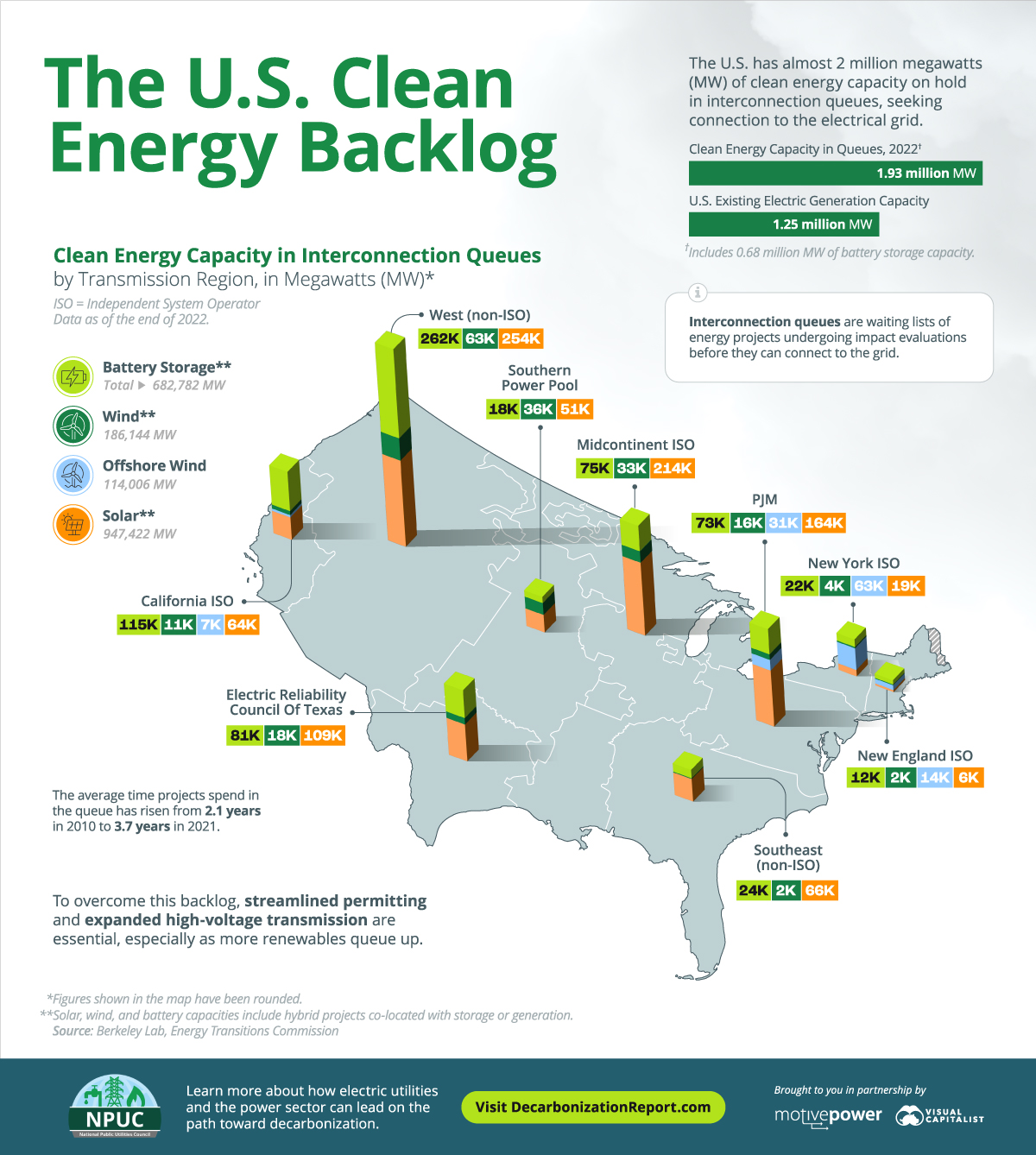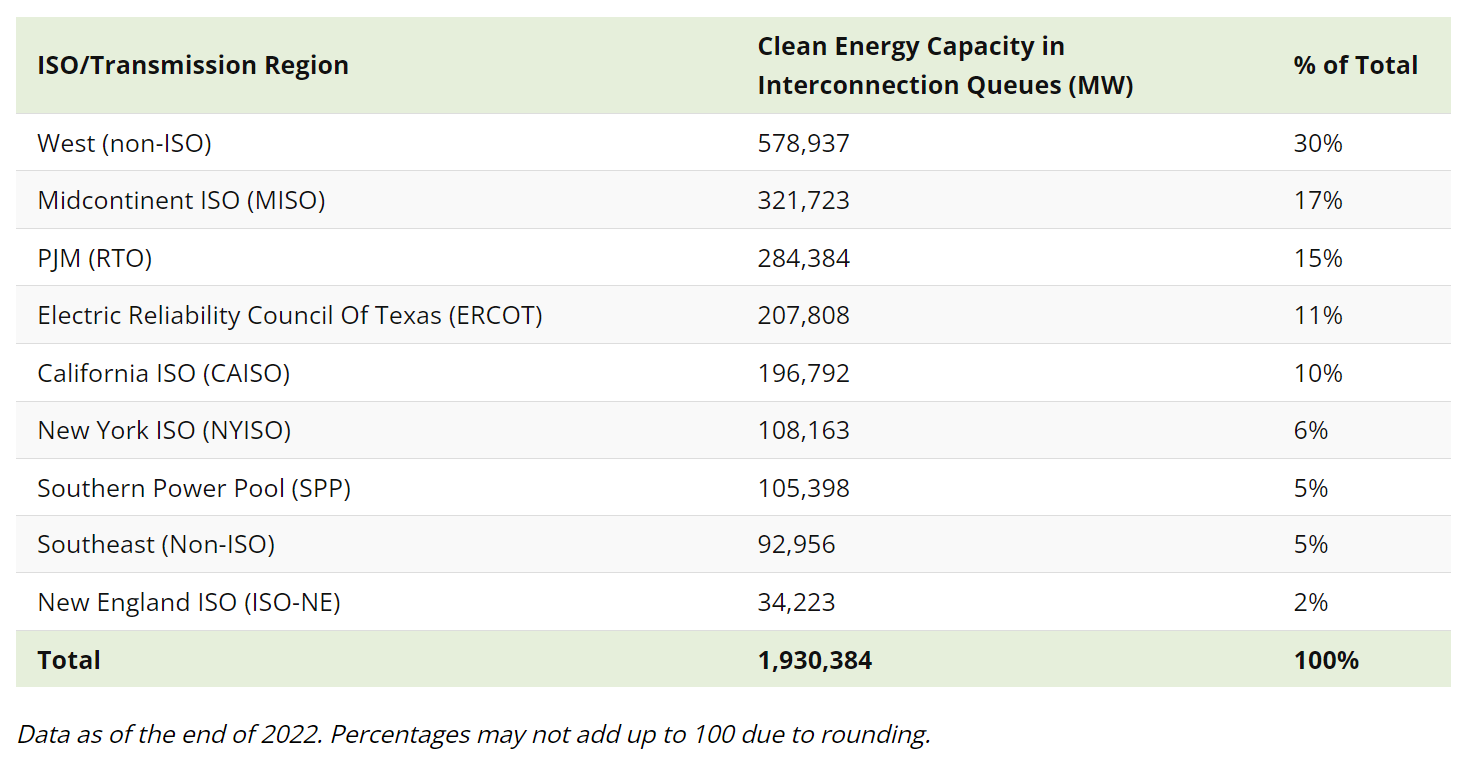


The U.S. has almost 2 million megawatts (MW) of solar, wind, and storage capacity on hold in interconnection queues, seeking connection to the electrical grid.
However, the lack of transmission infrastructure, in addition to a lengthy permitting process, has resulted in a bottleneck of clean energy projects awaiting approval before they can be plugged into the grid.
This infographic sponsored by the National Public Utilities Council maps U.S. clean energy capacity in interconnection queues by transmission region, based on data from the Berkeley Lab.
But before we dive into the data, let’s fully understand what interconnection queues mean.
Before new power plants can be built and connected to the grid, they go through a series of impact assessments to ensure safety and reliability. The projects in this process form grid interconnection queues, which are essentially waitlists of proposed power plants seeking grid connection.
Here are some of the problems associated with U.S. interconnection queues:
Although the backlog is alarming, the interconnection queues also show that project developers are invested in the clean energy transition. In fact, the amount of clean energy capacity in interconnection queues exceeds the amount needed to get to 90% zero-carbon electricity by 2035, according to Berkeley Lab.
Solar and battery storage projects account for the majority of capacity in interconnection queues, followed by wind.

Notably, 48% of all solar capacity in the queues is proposed as a “hybrid plant” that combines generation with battery storage. Similarly, over half of all battery storage capacity is proposed with some amount of generation.
The large number of hybrid and storage configurations show that project developers are addressing the intermittent nature of renewables by combining generation with storage.
Interconnection queues are managed by Independent System Operators (ISOs) and Regional Transmission Organizations (RTOs) that operate the grid and wholesale electricity markets in different regions. Here’s a look at the clean energy capacity in queues grouped by major transmission regions and ISOs:

Overall, the West (non-ISO) region has the most solar (254 GW), battery (262 GW), and onshore wind (63 GW) capacity in interconnection queues. Offshore wind capacity is highest in New York (63 GW), managed by the NYISO.
In 2022, California ISO did not accept any new interconnection requests due to the backlog from 2021. Meanwhile, the PJM announced that it would not review any new requests until 2025. Despite these slowdowns, over 700 GW of capacity was added to U.S. interconnection queues in 2022.
Given the current backlog, along with the incentives for new clean energy projects in the Inflation Reduction Act, clearing the gridlock is now more important than ever.
The large backlog, long wait times, and high withdrawal rates highlight the growing challenges in interconnection and transmission. Among other longer-term solutions, there are two ways to alleviate the gridlock:
To address this problem, some grid operators have already made changes to their interconnection processes. Additionally, the Department of Energy has launched the Interconnection Innovation Exchange (i2X) in an effort to improve collaboration and transparency in interconnection.
History shows that most of the projects in interconnection queues will ultimately not be built. However, what’s clear is that the U.S. is on the road to decarbonization, and energy project developers are focusing on clean energy sources for the future.
Originally published by Visual Capitalist at this link.